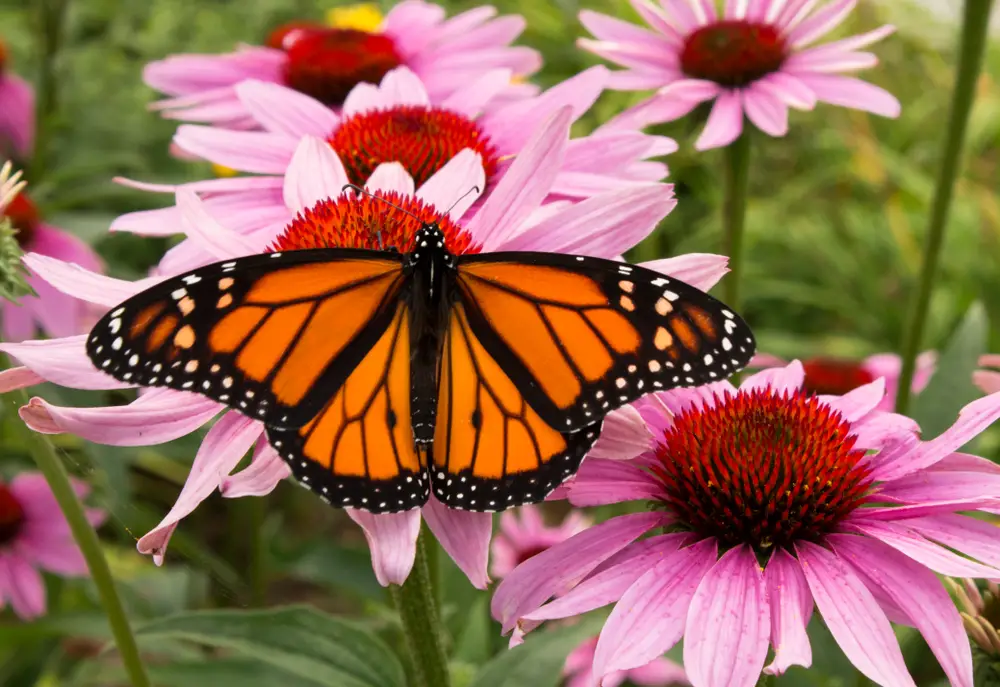Key Takeaways
- A butterfly garden is any part of a garden (or the whole garden) dedicated to attracting butterflies.
- Butterfly gardens attract butterflies by planting native plants they like, not using pesticides, providing shelter, water, and more.
- Butterfly gardens are worth considering since butterflies are essential pollinators for many flowers and the foods we eat, in addition to helping their dwindling numbers.
Ever wanted to draw more butterflies to your garden but weren’t sure how? The answer is a butterfly garden. But just what is a butterfly garden, and why should you consider one?
What Is A Butterfly Garden?
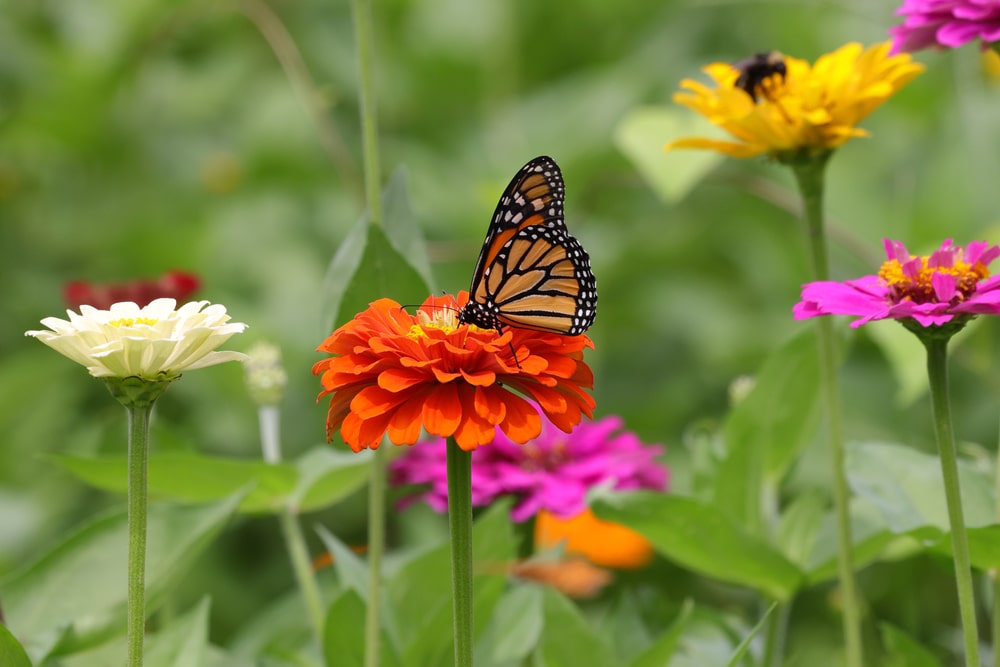
A butterfly garden is a garden built to attract butterflies. You can create your entire garden this way or a small part of it.
When making a butterfly garden, you’ll have to consider the needs of these beautiful winged creatures in order to make the space as habitable as possible (and be careful if you decide to handle them).
This includes planting native flowering plants, providing additional food sources and water, and providing nesting spots and shelter for the butterflies.
The good news is doing all this work doesn’t just mean a better environment for butterflies because you’ll also be creating a beautiful garden!
Why You Should Consider A Butterfly Garden
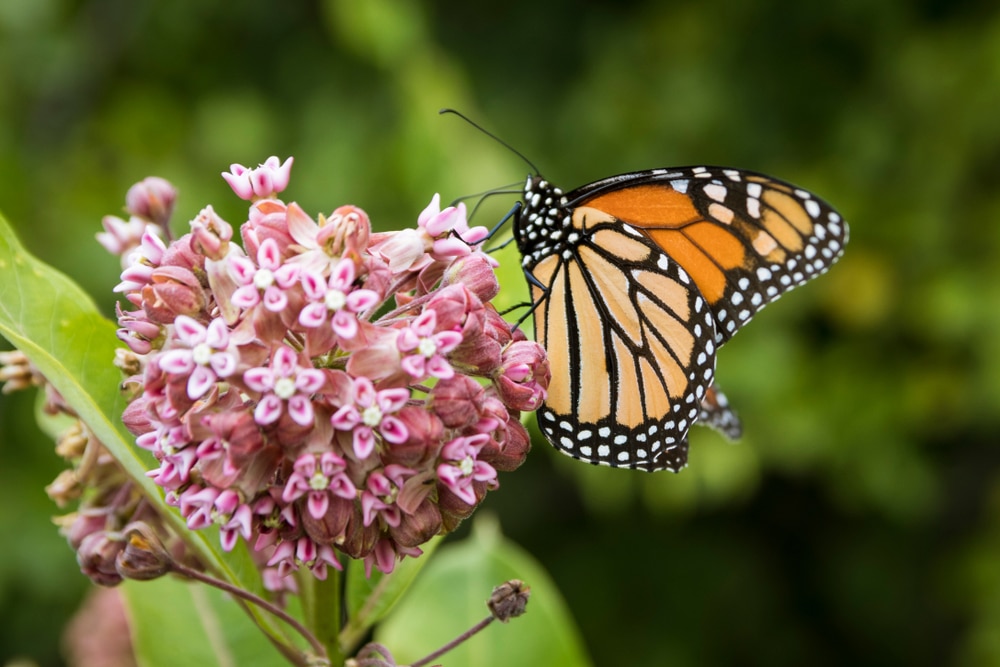
Butterflies are pollinators, which means they help many plant species reproduce by transferring pollen from one plant to another. This isn’t just on a small scale, either.
Butterflies are responsible for 0 million in cotton production. They’re also the main pollinators for crops such as legumes, carrots, mint, and sunflowers.
In other words, butterflies do a lot for us and the world. Building more butterfly-friendly environments, such as butterfly gardens, creates more opportunities for them to thrive so they can continue doing what they do best. This is especially important since butterfly populations have dwindled, such as the monarch butterfly, which is now endangered.
Plus, they can help if you mix an edible garden with your butterfly garden. In addition, they attract other beneficial insects like ladybugs, which act as natural pest controllers for things like aphids.
In short, butterflies are important for lots of reasons, and butterfly gardens, even small ones, are a great way to help them thrive.
How Easy Is It To Make A Butterfly Garden?
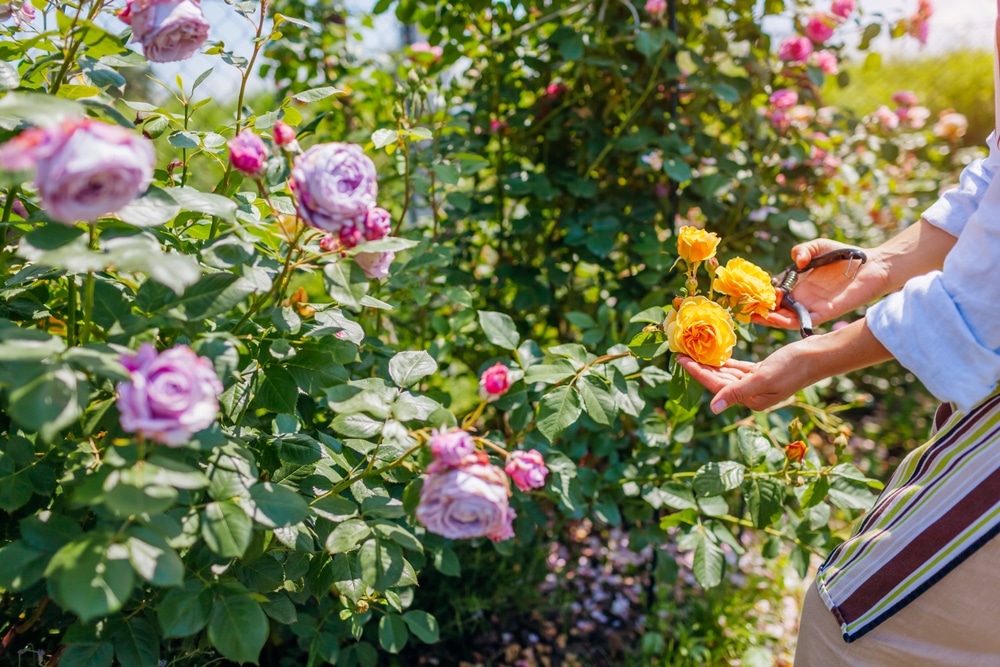
When I talk to people about making a butterfly garden, they often turn their noses up, thinking it’s an immense task. But it really isn’t!
When I say that, what I mean is you can create a very small area of your garden dedicated to butterflies. This requires minimal effort and very little investment because you can do most of the work with things you already have.
That said, making a more extensive butterfly garden is also possible. Let’s say you have a brand new property with a blank canvas for a garden; you could overhaul it and create a wild sanctuary for butterflies.
It all comes down to what resources you have and how much time you want to dedicate to your butterfly garden.
Can You Have A Butterfly Garden And A Regular Garden?
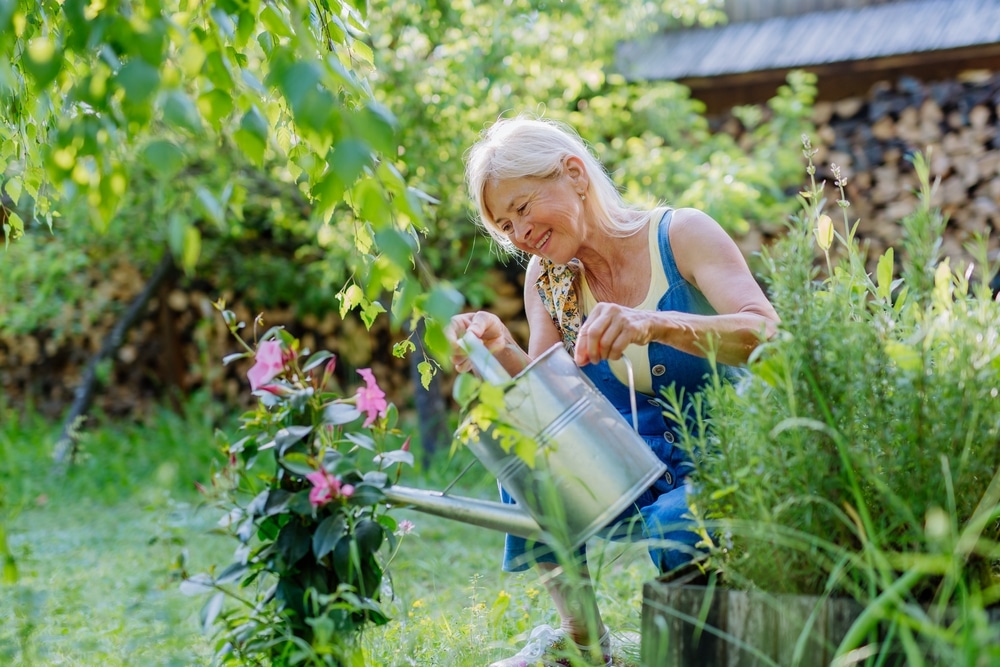
Yes! One of the great things about creating a butterfly garden is you don’t need to dedicate your entire outdoor space to it. Even if you’re limited in what you can do, simply filling a few window boxes with flowering plants and installing a hanging butterfly feeder is enough.
However, I advise that if you’re turning part of your garden into a butterfly paradise, you will need to stop using garden chemicals everywhere (which you should do anyway).
Chemicals like pesticides are harmful to butterflies. If you use pesticides, even if you only apply them to certain plants, rain can cause them to spill onto plants in your butterfly garden. Therefore, it’s best to avoid them altogether.
How Do You Make A Butterfly Garden?
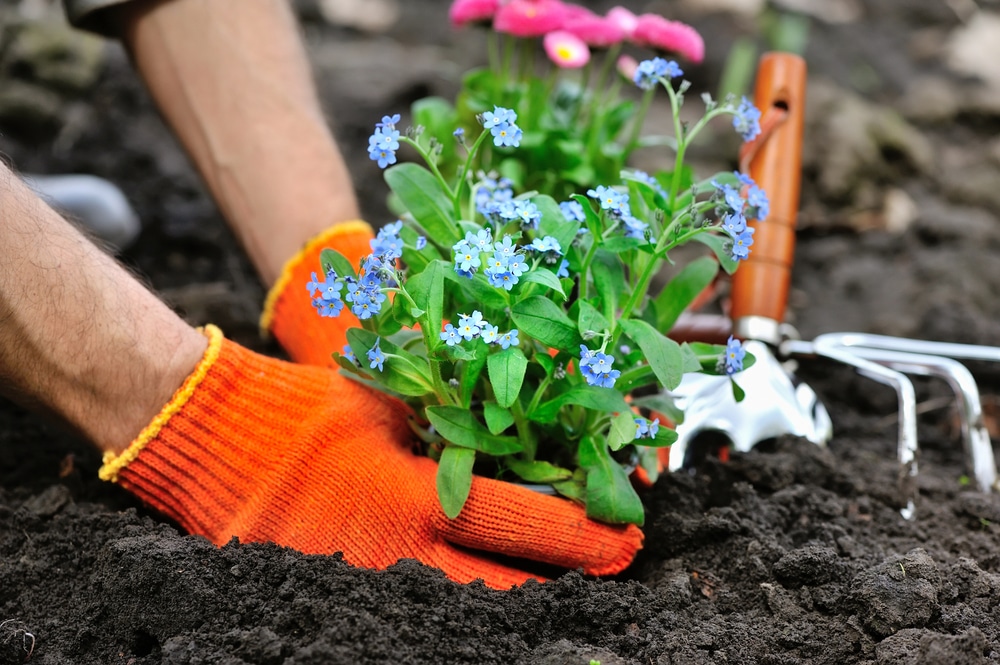
Most of the things you need to do to make a butterfly garden are easy. Here are my top tips for creating a beautiful butterfly garden.
Plant Native Plants
One of the most important things you can do to attract butterflies (and other pollinators) is to plant native flowering plants. In fact, if you’re only going to do one thing in your backyard for wildlife, it should be this!
According to butterfly conservation experts, most butterflies (and moths) have evolved to interact with certain types of plants. Most of these will be native species the butterflies use for food and egg-laying.
Planting exotic plants provides them with very few benefits, and what’s more, native plants will thrive better in your area, so you’ll have a more blooming garden. It’s a win for you and the butterflies.
You can use many different types of plants for butterflies, too; some will be host plants where they lay eggs, and others will provide nectar. Some of the most popular species include black-eyed Susans, buddleias (the butterfly bush), zinnias, purple coneflowers, and marigolds.
However, it’s worth researching their favorite flowers if you want to attract certain types of butterflies. For example, the monarch almost exclusively feeds on milkweed (and lays their eggs there, too), while the swallowtail butterfly loves verbena.
Have A Water Source
Butterflies need to drink water, so having somewhere they can rehydrate is a wonderful way to welcome them to your garden. What’s more, unlike humans, butterflies take a lot of essential nutrients, such as sodium, from muddy water (which you can make too).
Since butterflies are not good swimmers, though, avoid deep puddles. In fact, something as small as a butterfly puddler is ideal.
Use Butterfly “Baits”
When most people think about foods that attract butterflies, they think of homemade nectar, also called sugar water.
However, this isn’t the only thing you can attract butterflies with. There’s also something called butterfly bait.
For example, butterflies love anything yeast-based, so mixing rotting fruit with molasses creates the perfect treat for them that’s also nutritious. The best fruits to use are things like plums, bananas, apples, and peaches, so if you’ve got anything left over in the fruit bowl, why not put it to good use?
Provide Shelter
Butterflies are vulnerable, so they need places where they can take shelter. A great way to do this is to include a lot of shrubs, especially around the borders of your garden.
Another excellent idea is to plant plants of varying heights, as this creates a mini forest for the butterflies. Not only this but plants of different heights better mimic the butterfly’s natural habitat and will encourage natural feeding habits.
You can also buy a butterfly house, usually made from wood, with small slits for the butterflies to get in and out. While these do look nice, it’s worth considering they may also attract unwanted insects like paper wasps. Once these creatures establish themselves, they could serve as a deterrent to the butterflies.
Avoid Pesticides
One of the leading threats to butterflies is the use of garden and agricultural pesticides. When I talk to people about this, they are often instantly deterred from making a butterfly garden, believing that this means succumbing to garden pests.
But this isn’t true. Eliminating pesticides from your garden means providing a better environment for all wildlife that comes to it. That includes natural predators like ladybugs and lacewings, which will quickly eliminate any problem bugs like scale insects and aphids.
You might also use natural options like dish soap, water, or neem oil to spray directly onto plants, killing pests. Of course, you could always hand-pick pests off your plants, but this is more time-consuming (and you’ll have to take precautions to avoid any diseases they may carry).
Another great idea is to use companion planting. This is where you plant certain species around others you’re trying to protect; they act like a bodyguard for your precious veggie crops.
Usually, a companion plant will either deter pests because of its scent or it will become the intended target. Pests will chow down on the companion plant and leave your crops alone. Some great examples of good companion plants are:
- Strawberries and borage
- Tomatoes and marigolds
- Brassicas and mint or sage
- Leeks or carrots and lavender
Properly Maintain Your Garden
Putting a butterfly garden together is all well and good, but you need to maintain it. Just remember to do so without harsh chemicals.
Also, anyone starting a butterfly garden should get used to having a few weeds around. While we see them as annoying, they benefit butterflies, so it’s worth leaving them alone as much as possible.
That said, it’s essential to follow local laws concerning how overgrown your garden can be. Researching this information before you start will help ensure you don’t end up with a strongly worded letter or, worse, a fine.
Finally, if you live in an area where frost is likely to damage the roots of your plants, consider making your butterfly garden with potted plants instead. These are less susceptible to frost damage, as their roots are not in the ground. Moreover, if things get very cold, you can always move them indoors during winter.

